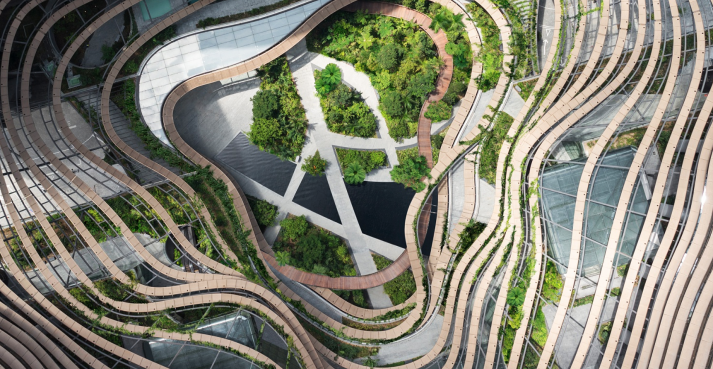The Best Strategy To Use For Landscape Design
Wiki Article
Some Known Incorrect Statements About Landscape Design
Table of ContentsEverything about Landscape DesignThe Buzz on Landscape DesignThe Only Guide for Landscape DesignThe Single Strategy To Use For Landscape Design10 Easy Facts About Landscape Design Explained
Official style theme. Credit Report: Gail Hansen, UF/IFAS The lawn is an expansion of the home where a range of tasks take location. A backyard can normally be split right into three areas: public (the front lawn), private (the garden), and service (normally the side backyard). The location of task locations depends largely on the sort of location, the size of area needed, the kind of task, and the wanted distance to various other activities and frameworks.The outdoors wall of the house typically works as the first wall surface or beginning factor of an exterior area. Incompatible usages need to be separated, and associated tasks, such as food preparation and dining, must be created to make the backyard more effective and satisfying. When using hardscape to develop spaces, make use of building product similar to that used in the house for connection from your house right into the garden.
Connected spaces. Debt: Gail Hansen, UF/IFAS Utilizing comparable hardscape functions and duplicating plants pulls the eye around the yard. Crucial points in the process can be stressed with plantings or attributes that draw interest and urge activity in a particular direction. Moving along the course takes a person from one location to the next and allows the customer to have a variety of experiences.
Landscape Design Can Be Fun For Anyone

For psychological comfort plants are utilized as physical or suggested obstacles for personal privacy and security. Physical obstacles obstruct both the sight and access to a space and consist of fences, wall surfaces and plant hedges. Suggested barriers, typically low expanding plants, block gain access to but not the sight (Number 9). Other features of plants include cleansing the air, avoiding erosion and dirt loss, retaining wetness in the soil, and returning raw material to the dirt.
Physical and suggested barriers. Credit History: Gail Hansen, UF/IFAS For these factors, the kinds of plants to be made use of (such as trees, shrubs, or groundcovers) must be picked in the beginning of planning (Landscape Design). Plant kinds are selected for their useful capacities to make sure that their future purpose and required room can be considered at the same time

The Ultimate Guide To Landscape Design
Each plant mass is in front of, behind, or following to, one more mass. Credit History: Gail Hansen, UF/IFAS Repeating plants within a mass and duplicating masses with comparable plants connects the yard together. The private plant attributes should be taken into consideration to successfully layer and mass plants.All plant make-ups start with the primary framework plants, the big, primarily evergreen background plants-such as the trees and huge hedges. These plants different or enframe spaces, control the dimension of the space, and give the starting point for picking the proper characteristics of the second layer, midground plants, for massing and infill.
Important points in the yard ought to be highlighted by the use one-of-a-kind plants, unique structures, or yard ornaments. Noting limits or entrances to rooms can be finished with gateways, arbors, and steps, or via using unique and vivid plants. The type and/or design motif of the garden look what i found will certainly usually help establish the important factors and how they should be highlighted.
Various other vital locations in the lawn are focal points, which is made use of to visually arrange a landscaped location. Different perspectives or point of views can disclose various structures in the landscape that may need a variety of focal points.
3 Easy Facts About Landscape Design Explained

Plant forms. Credit Score: Gail Hansen, UF/IFAS After kind, appearance is the next leading feature of a plant; coarse, tool and great structures can be made use of for contrast and emphasis in the landscape.
The pleasurable fragrance of plants, the noise of wind in the trees, the sound and structure of water, and the shades and structures of sculptures, pots and yard furnishings all include to the experience of the garden. One information that is often forgotten is the effect of light on the aesthetic appeals of the plants.

Everything about Landscape Design
It is very important to know the eventual fully grown dimension of plants so they can be put in the right area and spaced effectively when they are set up. Offering plants room to expand is a challenge because the usual mature size is typically based on optimum growing conditions and the environmental problems of a website may cause a plant to enlarge or remain smaller sized.
Report this wiki page